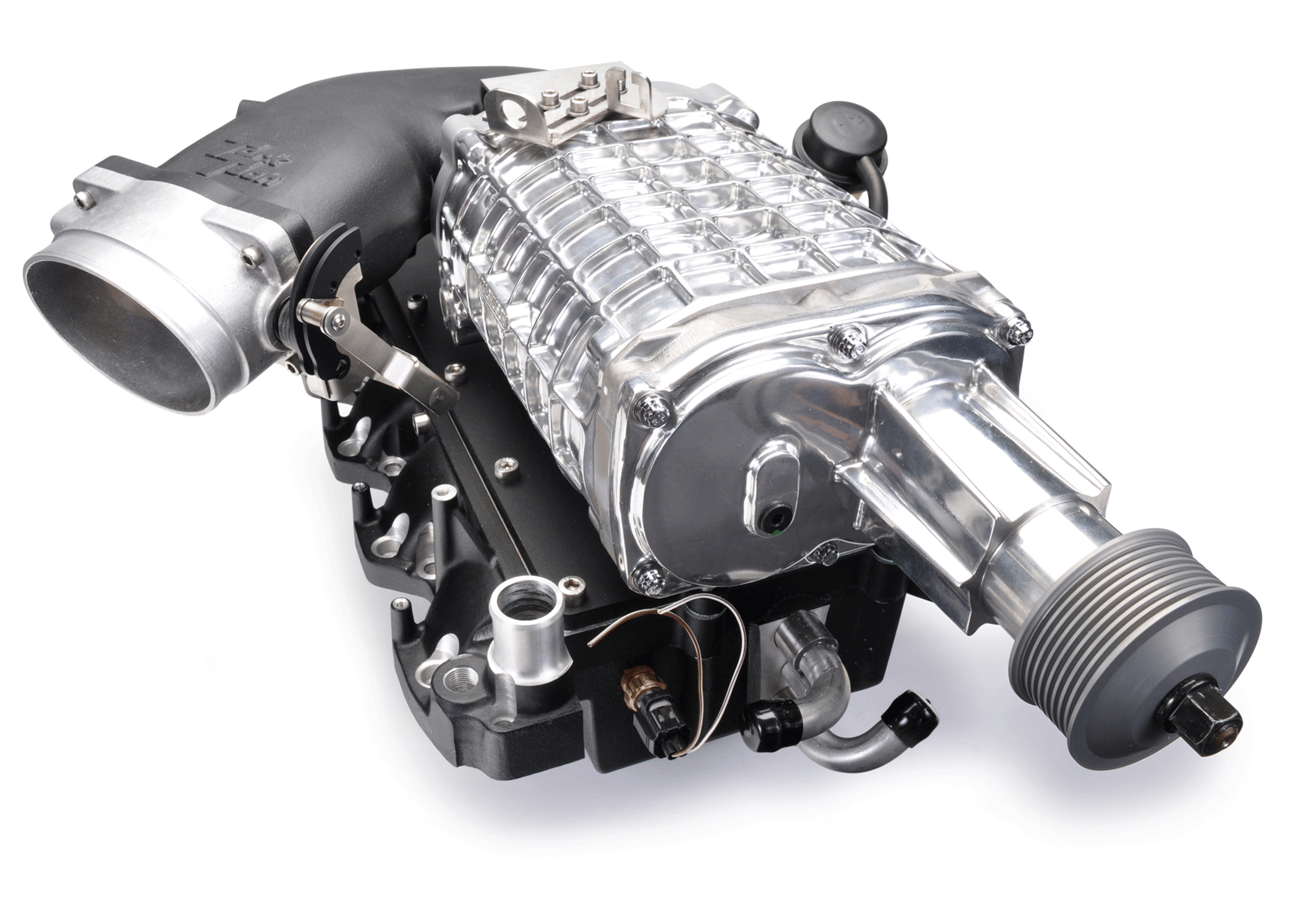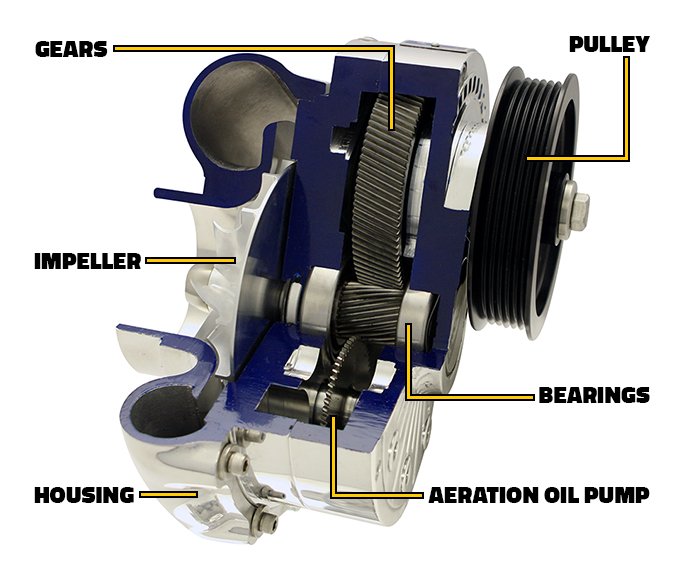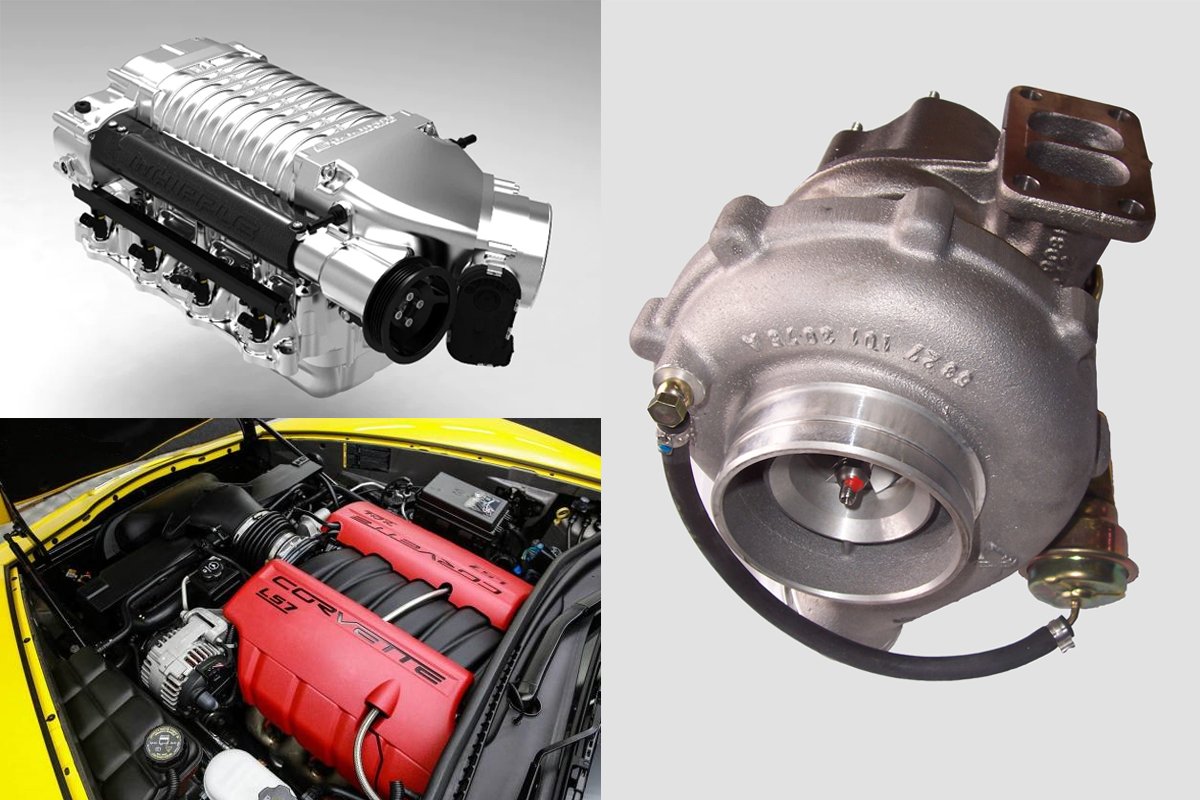I am here to discuss how engines breathe. There are three ways an engine breathes air: through turbochargers and Superchargers, or naturally aspirated.
Let’s understand Turbochargers and Superchargers or Naturally aspirated engines in detail with pros and cons.
Naturally Aspirated Engine
It is an internal combustion engine in which air intake depends solely on atmospheric pressure acting against a partial vacuum that occurs as the piston travels downwards toward the bottom dead centre during the intake stroke and does not rely on forced induction using a turbo or supercharger. Many sports cars use naturally aspirated engines to avoid turbo lag. Using an air intake the air is flown into the engine. Most petrol cars are naturally aspirated, cause naturally aspirated diesel engines cannot generate a suitable power-to-weight ratio for the modern market. NA engines generally produce less power than turbocharged or supercharged engines of the same engine displacement and development level but tend to be cheaper to produce.
List of Awesome Sports Cars with Natural Aspirated Engines
- Lexus LFA – 552bhp — My favourite
- Lamborghini Gallardo Superleggera – 562bhp
- Aston Martin Vantage GT12 – 595bhp
- Ferrari 458 Speciale – 597bhp
- Lamborghini Huracan – 602 hp
- Porsche Carrera GT – 604bhp
- McLaren F1 – 627bhp
- Dodge Viper ACR – 645bhp — My favourite
- Lamborghini Murcielago SV – 661bhp
- Ferrari Enzo – 651bhp
- Audi R8 – 540-hp
Advantages
- Easier maintenance
- Lower production and development costs
- Higher reliability (less separate parts)
- Direct throttle response (no turbo lag)
Disadvantages
- Lower efficiency
- Lower power-to-weight ratio
- There is a small potential for tuning
- Greater power loss at a higher elevation (lower air pressure) compared to forced induction counterparts
Turbocharged Engine

Turbocharged engines can develop a considerable amount of power using a small engine. Nowadays, most diesel engines are turbocharged for better power-to-weight ratio, fuel efficiency, and better emissions.
The turbocharged engine sucks in the exhaust gas produced by the engine in the turbine using the inlet port, the thermal energy is converted to kinetic energy, which makes the turbine wheel spin and also the compressor wheel spins, which is connected with the shaft to the turbine wheel at the same speed. The compressor wheel draws in air and compresses it, and then it passes through the outlet port. The compression causes the air to heat hence, an intercooler is placed in the system to cool the air, which passes through the outlet into the cylinder.
There are two valves, a wastegate valve and a blow-off valve. Wastegate lets out extra exhaust gas from entering the turbine, which limits the rotational speed of the turbine wheel and prevents it from being damaged. The blow-off valve releases the excess pressure gas in the intake manifold when the intake valve is closed. Hence, there is a hissing sound when you let go of the throttle. This process of getting the exhaust to spin the turbine causes turbo lag because you have to wait for the exhaust gas.
There are single turbo, twin-turbo, which are becoming common nowadays, and there is also triple turbo in the BMW N57 engine, and the Audi SQ7. Yeah, there is also a quad-turbo in one and only car Bugatti Veyron, and of course, its successor Bugatti Chiron, also has 4 turbo and the predecessor Bugatti EB 110 has 4 turbos, but only 12 cylinders, not 16 as compared to the other two models.
Advantages
- Produces higher power output from a smaller engine
- Better efficiency
Disadvantages
- Turbo Lag
- Higher maintenance
- Overheating
Supercharged Engine

Superchargers are operated by engine belts, not unlike turbochargers, which use exhaust gases. They provide more air to the engine, which in turn generates more power by burning more fuel. The supercharger is more reliable, it produces power at low RPM, as it runs using an engine belt and uses some amount of engine power.
There are 3 types of superchargers
- Roots/Blower type Supercharger
- Centrifugal Supercharger
- Twin Screw Supercharger
Roots Supercharger

It is the first supercharger ever used, which dates back to the 1880s. The Roots supercharger has 2 counter-rotating twisted or straight-lobed rotors. These 2 rotors rotate quickly and pull the air from the top pass through the gaps of the rotors and push it out through the bottom into the intake manifold. The compression does not happen inside the supercharger, the intercooler is placed below the supercharger and then cooled air enters the combustion chamber.
Advantages:
- Good low RPM power.
- Reliable and fairly cheap.
- Like other Superchargers, it does not use engine oil.
Disadvantages:
- Creates a lot of Heat at higher boost levels.
- It uses engine power to run the supercharger. If you use 20% of the engine power, the supercharger will generate 40% power.
- As this supercharger is placed on top of the engine, the centre of gravity rises up.
Twin Screw Supercharger / Screw Compressor

A twin-screw supercharger operates by pulling air through a pair of meshing lobes from the back or front and forcing it out to the side. The air inside the twin-screw supercharger is trapped in pockets created by lobes. But unlike the root supercharger, which pumps the air, the twin-screw supercharger compresses the air inside the housing. The compression happens as the air moves between the screws, but it does not create heat inside as the rotors don’t touch, only heat is the heat generated by the pressure. It creates power from low rpm to high rpm.
Advantages:
- Has a high thermal efficiency
- Low rpm and high rpm power without heat
- Do not use engine oil
Disadvantages:
- Not easily Intercooled
- Expensive because of the complex design
- It uses engine power to run the supercharger if you use 20% of the engine power, the supercharger will generate 40% power.
Centrifugal Supercharger

It has an impeller just like a rotator, which spins at high speed (50,000 to 60,000 rpm) and sucks the air into the compressor housing. Due to the centrifugal force, the air inside the impeller hub radiates outwards with low pressure and high speed. A diffuser that surrounds the impeller converts the high-speed, low-pressure air into low-speed and high-pressure air and the density of air increases. This creates more power by burning more fuel with a higher level of combustion.
Centrifugal Superchargers are connected using rain gear, which is connected to the larger gear, which is directly connected to the crankshaft. This centrifugal supercharger has a gear ratio (4.4:1). Generally, with every crankshaft rotation, the impeller rotates around 4 times. It is a very efficient and the most commonly used supercharger. They are small, lightweight, attached to the front of the engine and easy to install compared to root and twin screw superchargers. They produce less heat, and an intercooler can be installed easily.
Advantages:
- Has a high thermal efficiency
- It is small and compact
- Produces less heat
Disadvantages:
- Not much power at low RPM
- Consumes Engine oil to lubricate the system.
- It uses engine power to run the supercharger. If you use 20% of the engine power, the supercharger will generate 40% power.
So what’s best for your car, Turbochargers and Superchargers or a naturally aspirated engine? It depends on your requirements. Natural aspirated is my personal favourite, but you must have a large displacement engine to have lots of power. The turbocharged engine can generate a lot of power with a small displacement engine, but as it uses the exhaust gas, there is a turbo la,g with which you do not get power at low rpm. Then comes the supercharger, they are the best because it generates power at all rpm, especially the Twin-screw.
Which one out of Turbochargers and Superchargers or a Naturally aspirated engine would you choose? Let us know.


